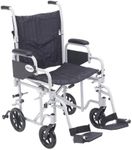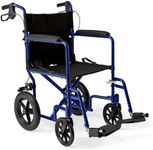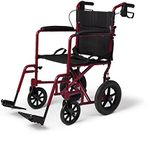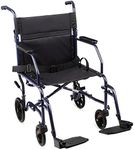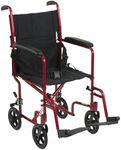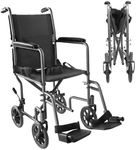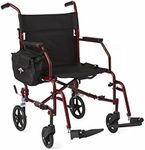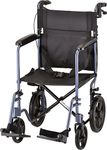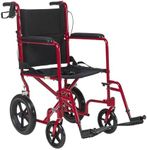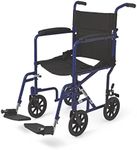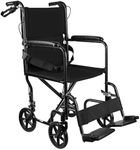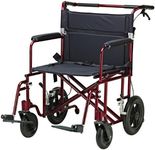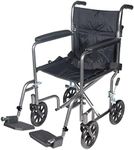Buying Guide for the Best Transport Chairs
Choosing a transport chair is all about finding the right balance between comfort, portability, and usability for the person who will be using it. Transport chairs are designed to help people who have difficulty walking or moving around on their own, and they are typically pushed by a caregiver. When picking a transport chair, it's important to think about where and how often it will be used, who will be pushing it, and the needs of the person sitting in it. Understanding the key features will help you make a choice that keeps everyone comfortable and safe.Weight of the ChairThe weight of a transport chair refers to how heavy the chair is when it's empty. This is important because a lighter chair is easier to lift, fold, and put into a car, which is especially helpful for caregivers who may need to transport it frequently. Chairs can range from very lightweight (under 20 pounds) to heavier models (over 25 pounds). If you plan to travel often or need to carry the chair up steps, a lighter model is usually better. If the chair will mostly stay in one place, weight may be less of a concern.
Seat Width and DepthSeat width and depth describe the size of the area where the person sits. This is important for comfort and safety, as a seat that's too small can be uncomfortable, while one that's too large may not provide enough support. Common seat widths range from about 16 to 20 inches. To pick the right size, measure the user's hips while seated and add a little extra room for comfort. The depth should allow the user to sit back comfortably without the edge of the seat pressing into the back of their knees.
Wheel SizeTransport chairs usually have smaller wheels than standard wheelchairs, which makes them lighter and easier to maneuver in tight spaces. The size of the wheels affects how smoothly the chair rolls over different surfaces. Smaller wheels (around 8 inches) are best for indoor use and smooth surfaces, while slightly larger wheels can handle outdoor terrain a bit better. Think about where you'll use the chair most often to decide which wheel size is best for you.
Foldability and StorageFoldability refers to how easily the chair can be collapsed for storage or transport. This is important if you need to put the chair in a car trunk or store it in a small space. Some chairs fold in half, while others have additional features like removable footrests or folding backrests to make them even more compact. If you'll be taking the chair in and out of vehicles often, look for one that folds easily and doesn't have too many parts to remove.
Weight CapacityWeight capacity is the maximum weight the chair can safely support. This is important for safety and durability. Most standard transport chairs support up to 250-300 pounds, but there are heavy-duty models for higher weight needs. Always choose a chair with a weight capacity that is higher than the user's weight to ensure safety and long-term use.
Armrest and Footrest DesignArmrests and footrests provide comfort and support for the user. Some armrests are fixed, while others can flip up or be removed to make getting in and out of the chair easier. Footrests may swing away or be detachable, which helps with transfers and storage. Consider how much help the user needs getting in and out of the chair, and whether adjustable or removable parts would make things easier.
Brakes and Safety FeaturesBrakes are important for keeping the chair steady when the user is getting in or out, or when stopping on a slope. Some chairs have hand brakes for the caregiver, while others have locking brakes on the wheels. Safety belts and anti-tip features can also add security. Think about where and how the chair will be used, and choose features that will help keep the user safe in those situations.
